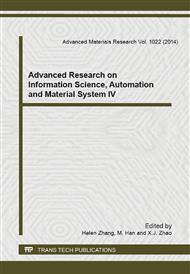p.376
p.380
p.387
p.392
p.396
p.402
p.406
p.411
p.415
Research on Stability of Intelligent Control System for Turning with Management Method
Abstract:
With application in turning, this paper presents a stability control system which based on a new strategy. It works by permanent assessment of the operating point position system which is relative to the stability limit and process parameter, in-process modification. For example, this point is always placed in the stable domain that gives the highest process performance. In the case of turning, here approached: first, this area is the stability limit proximity; second, the operating point system position is determined by assessing a cutting force monitored signal feature, last, it changed this position by modifying the cutting edge setting angle, the feed rate, and the cutting speed, as it follows: when the risk of the stability limit is imminent, the setting angle is increased, which followed by a feed rate diminishing and then by a worked piece rotation speed reduction, after surpassing the risk, the three variables modification is reversed, through this way the chatter onset could be avoided and the performance can be kept in every moment at the highest level. The system was experimentally implemented on a transversal lathe. The results of tests about dedicatedly designed specimens are showing a machining productivity that significantly increases, in conditions of a stable cutting process. Without important modifications, it can be easily added to the existing CNC machine tools.
Info:
Periodical:
Pages:
411-414
Citation:
Online since:
August 2014
Authors:
Price:
Сopyright:
© 2014 Trans Tech Publications Ltd. All Rights Reserved
Share:
Citation:


